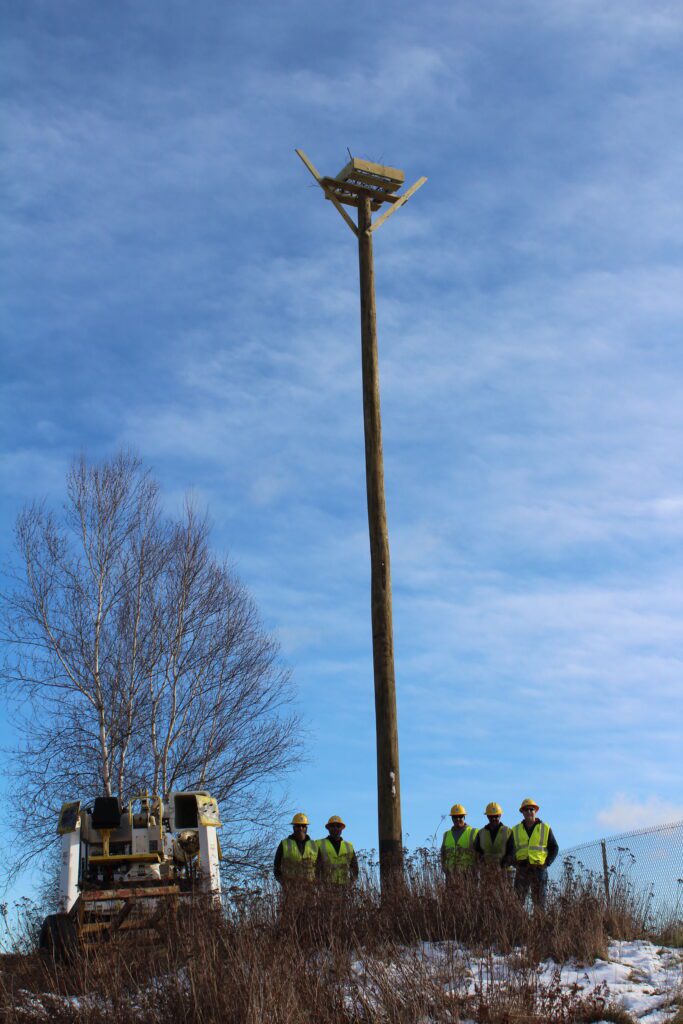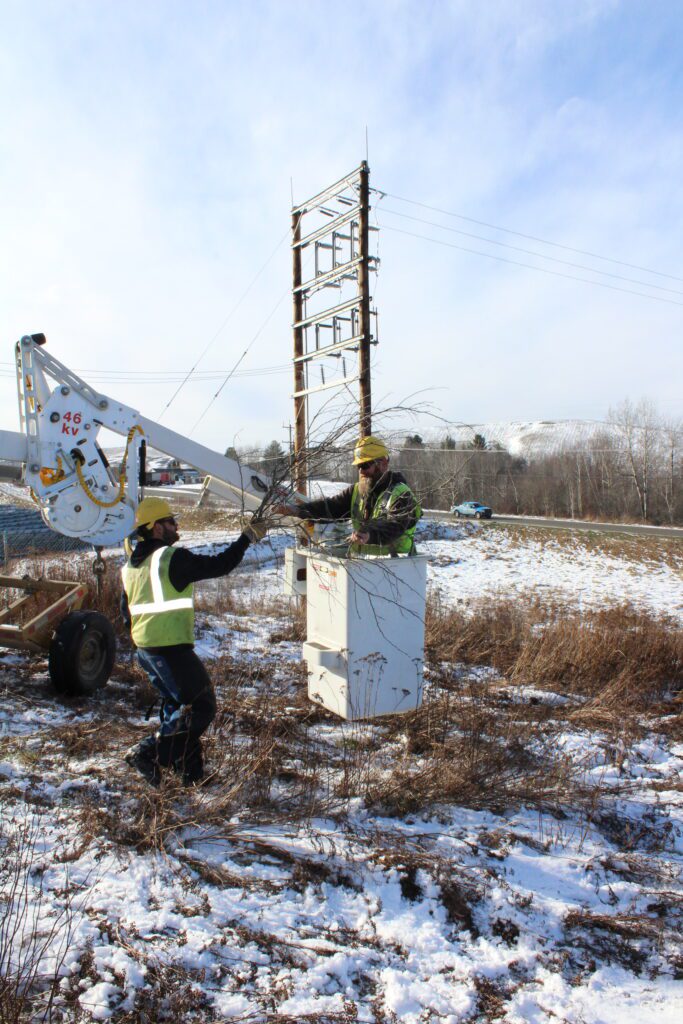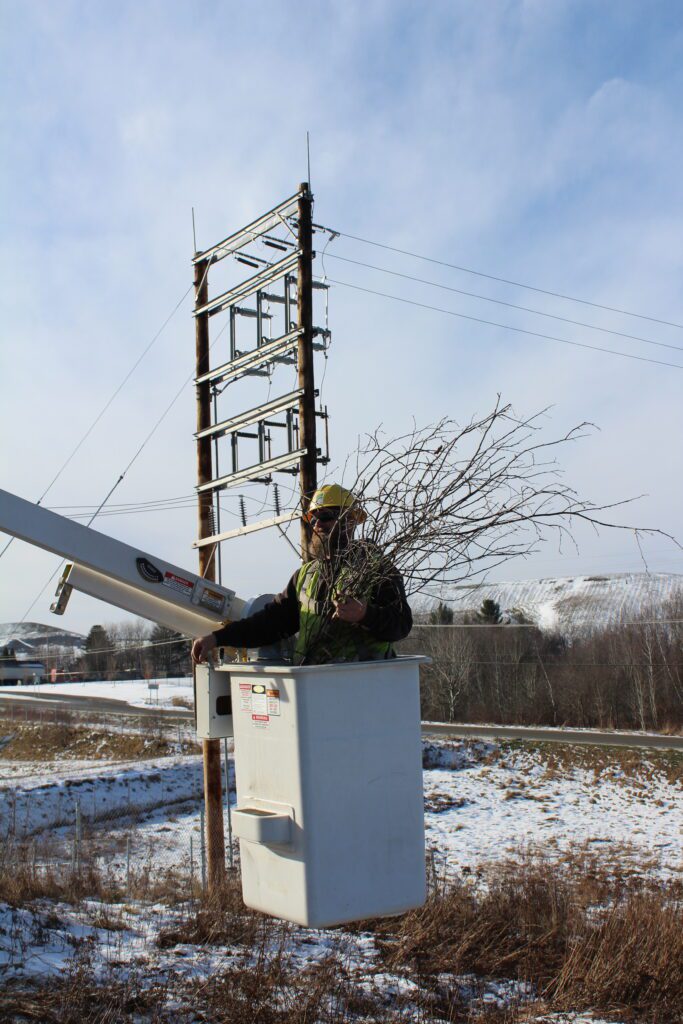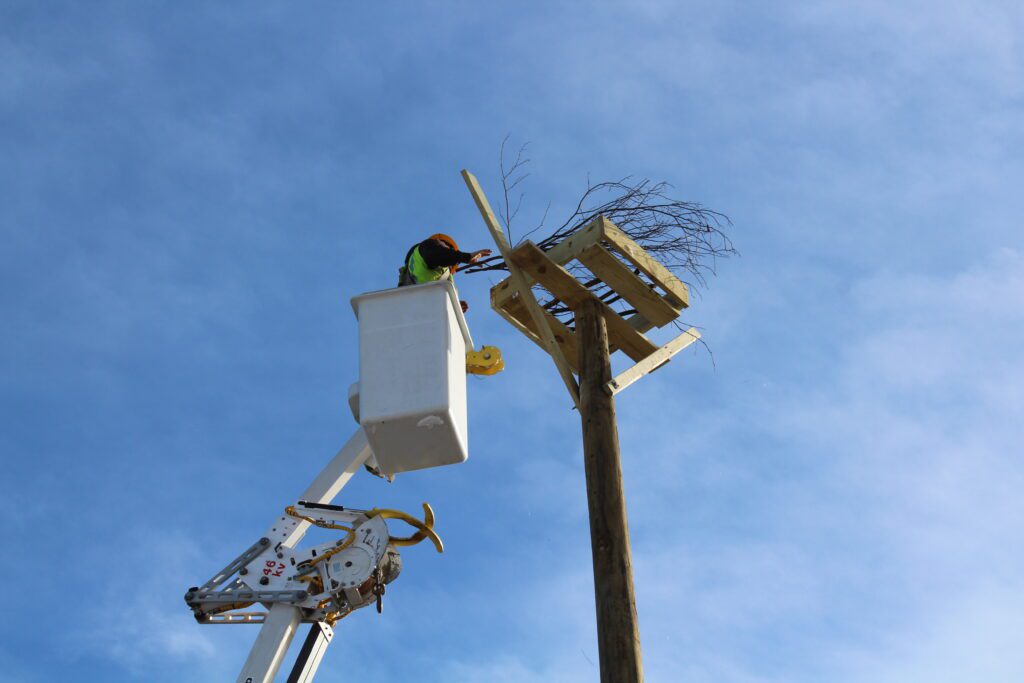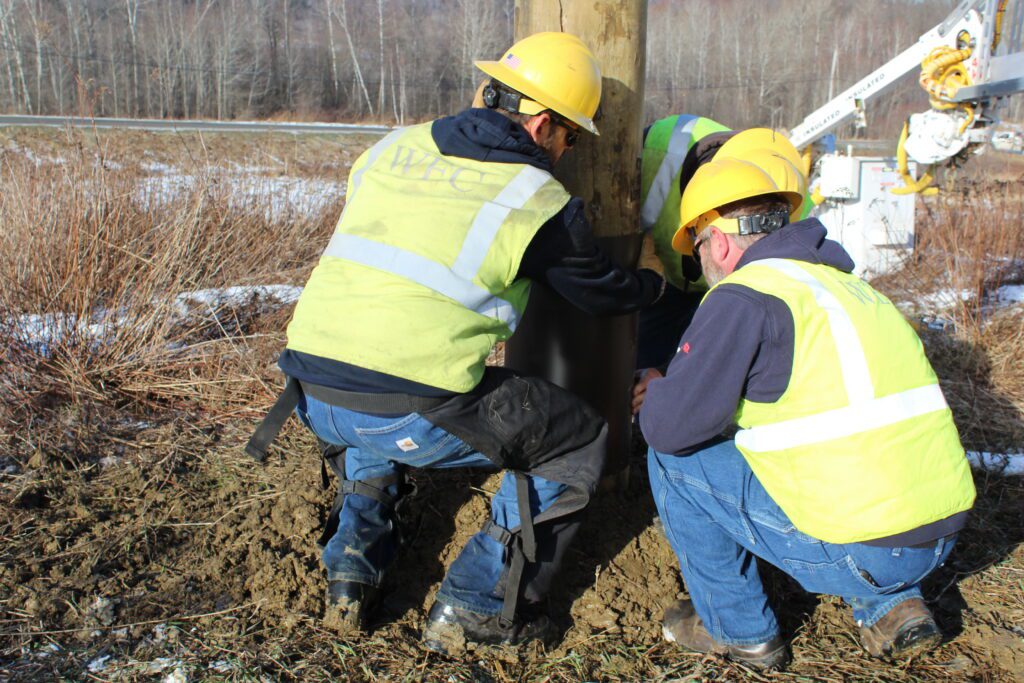Osprey often build their nests on human-made structures. This can cause big problems when the structure they choose is a utility pole with energized wires. The nest becomes a fire hazard, the birds risk electrocution, customers can experience unexpected outages, and line crews may have trouble identifying the issue.
That’s what happened in Coventry in 2022, when a young osprey couple decided to locate their nest on top of a utility H-frame that WEC shares with VELCO. The nest shorted out electrical service close to midnight, which led to a multi-hour outage as line crews checked and rechecked the transmission lines in vain. After the nest was located and power was restored, WEC consulted with Vermont Fish and Wildlife about how to avoid a repeat incident.
This time last year, WEC lineworkers installed an osprey nest atop a 40-foot, non-energized utility pole at the north end of the solar field across from the Coventry landfill. The four-foot square wooden box is located at the highest point on the hillside – a desirable piece of real estate for reproducing osprey – and was furnished with sticks to encourage nest construction.
“We spoke with the game warden, who said that there probably weren’t any eggs in the nest” when the outage occurred, said WEC Director of Engineering and Operations Dave Kresock. “Osprey like to play house for a year before they actually start to lay eggs and start a family.”
He added that the new osprey pole should have the twin benefits of allowing the osprey to reproduce safely and preventing another outage. A year later, osprey have stayed off the H-frame, and have shown signs of investigating the new platform.
Once endangered in North America, osprey have rebounded and flourished in recent years. Widespread use of the chemical DDT ravaged the osprey population during the 1950s and 60s: as the pesticide made its way up the food chain, osprey eggs became so thin that they’d crack before hatching. This led to a population crash in the raptor species before the Environmental Protection Agency banned DDT in 1972.
Over the last three generations, there’s been a dramatic increase in the North American osprey population. This is great news for the birds and our ecosystem, but they still face human threats, which is why WEC is doing its part to help protect them.
